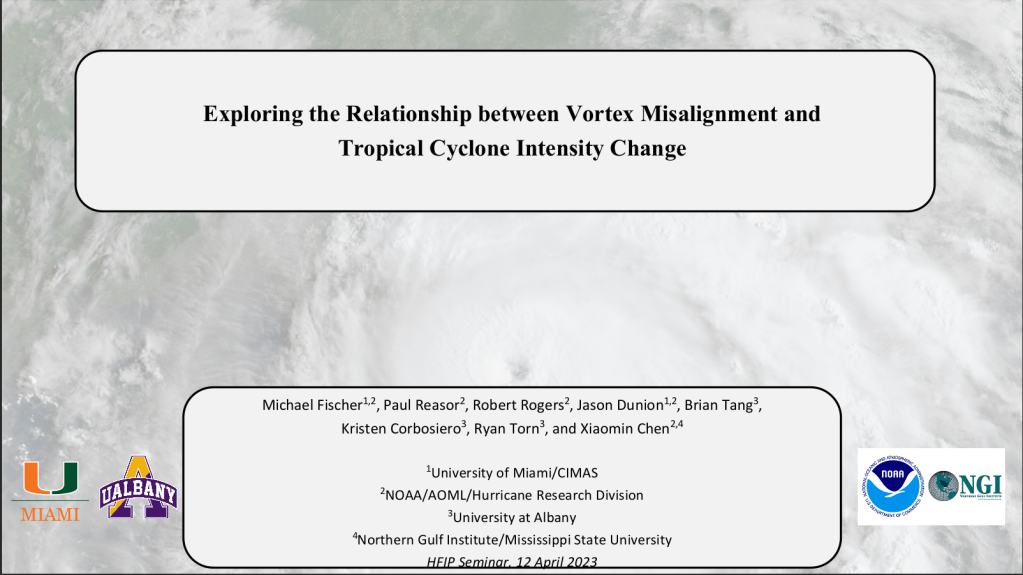The Hurricane Forecast Improvement Project (HFIP) was established in 2007, in response to devastating hurricanes such as Charley in 2004, and Wilma, Katrina, Rita in 2005. It provides unifying organizational infrastructure for NOAA and other agencies for hurricane research needed to improve the accuracy and reliability of hurricane forecasts, to extend lead time for hurricane forecasts with increased certainty, and to increase confidence in hurricane forecasts.

During the seminar, Michael showed that nearly all tropical cyclones encounter vertical wind shear that tilts its vortex. In this presentation, an ensemble of high-resolution numerical simulations of a real tropical cyclone is used to show how initially small differences the size of observational errors in the magnitude of vortex tilt and strength of the tropical cyclone can lead to significantly different outcomes in intensity. It is hypothesized that tropical cyclones that have large tilt are more susceptible to environmental dry-air intrusions, which can weaken convective activity in the tropical cyclone core, leading to a decrease in tropical cyclone intensity and an further increase in vortex tilt. Tropical cyclones with aligned vortices are resilient despite nearby dry air and are able to rapidly intensify. To assess the significance of vortex tilt on tropical cyclone intensity change in nature, a recently-developed airborne Doppler radar database containing over 1,000 unique analyses of across a wide range of intensities is examined. The size of the vortex tilt is closely related to both future intensity change and the precipitation structure, especially for relatively weak tropical cyclones. This study is believed to be the first time that an observationally-based, multi-case characterization of the relationship between vortex tilt and tropical cyclone intensity change has been performed for systems below hurricane intensity.
You can find the slides for the seminar here. For more information, contact aoml.communications@noaa.gov.